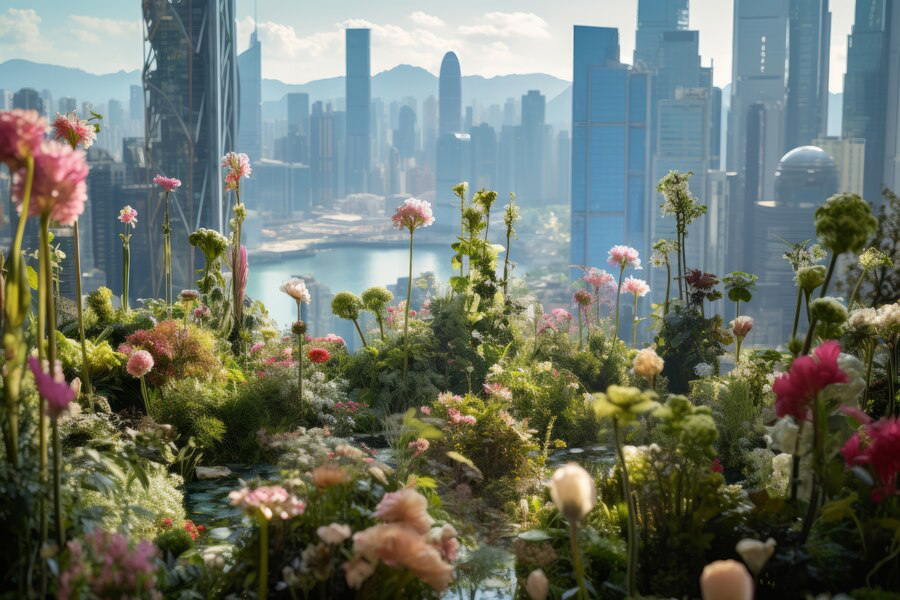As we step into a new year, the world of landscape design continues to evolve, with fresh trends and innovations shaping outdoor spaces. From sustainable practices to cutting-edge technology, the landscape design industry is constantly pushing boundaries to create inspiring and functional environments. In this article, we’ll explore the landscape design trends for 2024, highlighting what’s hot and what’s not in the world of outdoor aesthetics and functionality.

Sustainable Landscaping:
Hot: Sustainable landscaping practices are gaining traction as homeowners and designers prioritize environmental stewardship and resource conservation. From rainwater harvesting systems and drought-tolerant plantings to permeable paving and green roofs, sustainable landscaping techniques help minimize water consumption, reduce pollution, and support biodiversity.
Not: Traditional landscaping practices that rely heavily on water-intensive lawns, chemical fertilizers, and pesticides are falling out of favor as concerns about water scarcity and environmental impact grow.
Outdoor Living Spaces:
Hot: Outdoor living spaces continue to be a popular trend, with homeowners seeking to extend their indoor living areas into the great outdoors. From expansive patios and outdoor kitchens to cozy fire pits and lounging areas, outdoor living spaces are designed for relaxation, entertainment, and socializing year-round.
Not: Cookie-cutter backyard designs that lack personality and fail to maximize the potential of outdoor spaces are becoming passé as homeowners prioritize customized, multi-functional outdoor environments.
Biophilic Design:
Hot: Biophilic design, which seeks to incorporate elements of nature into the built environment, is gaining momentum in landscape design. From living walls and vertical gardens to natural materials and wildlife habitats, biophilic design principles help create healthier, more harmonious outdoor spaces that foster well-being and connection with nature.
Not: Sterile, overly manicured landscapes devoid of natural elements and biodiversity are losing appeal as people increasingly recognize the importance of nature for mental and physical health.
Tech-Integrated Landscapes:
Hot: Technology is playing an increasingly prominent role in landscape design, with innovations such as smart irrigation systems, outdoor lighting controls, and automated garden maintenance tools revolutionizing the way we interact with outdoor spaces. These tech-integrated landscapes offer convenience, efficiency, and enhanced functionality for homeowners.
Not: Outdated landscape designs that lack modern amenities and fail to embrace technological advancements are no longer meeting the needs and expectations of today’s homeowners.

Native Plantings and Pollinator Gardens:
Hot: Native plantings and pollinator gardens are gaining popularity as people seek to support local ecosystems, attract beneficial wildlife, and create vibrant, biodiverse landscapes. Native plants provide food and habitat for pollinators such as bees and butterflies, while also requiring less water and maintenance than non-native species.
Not: Monoculture landscapes dominated by non-native plants and devoid of wildlife-friendly features are being replaced by diverse, ecologically rich gardens that celebrate the beauty and resilience of native flora and fauna.
Conclusion:
As we enter 2024, the landscape design industry is poised for exciting developments that embrace sustainability, functionality, and connection with nature. By incorporating trends such as sustainable landscaping, outdoor living spaces, biophilic design, and tech-integrated landscapes, homeowners and designers can create outdoor environments that are not only aesthetically pleasing but also environmentally conscious, healthy, and resilient. Contact us today to explore how we can help you incorporate these cutting-edge trends into your landscape design projects and create outdoor spaces that inspire, rejuvenate, and connect with the natural world.
